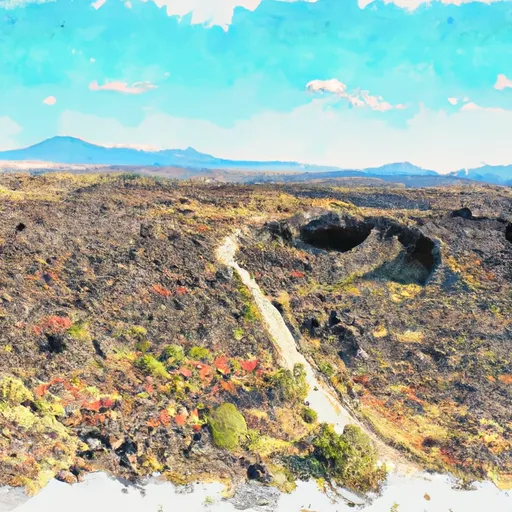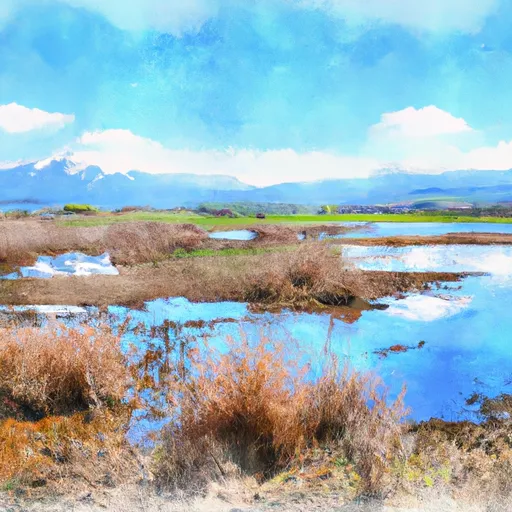Tule Lake National Wildlife Refuge
Rate this placeLast Updated: January 3, 2026
Tule Lake National Wildlife Refuge is located in southern Oregon and spans over 39,000 acres.
°F
°F
mph
Wind
%
Humidity
Summary
It was established to protect and preserve important wildlife habitats, including wetlands, marshes, and open water areas. Here are some key points about the refuge, gathered from multiple independent sources:
Reasons to Visit:
1. Rich Biodiversity: Tule Lake National Wildlife Refuge is home to a diverse range of wildlife species, including waterfowl, migratory birds, bald eagles, and endangered species like the Lost River sucker and shortnose sucker.
2. Bird Watching: The refuge is a paradise for bird enthusiasts, with over 350 species of birds recorded. It serves as a critical stopover point for migratory birds along the Pacific Flyway.
3. Scenic Beauty: Visitors can explore the refuge's picturesque landscapes, including vast wetlands, serene marshes, and open water areas, providing ample opportunities for photography and nature appreciation.
4. Outdoor Recreation: The refuge offers various recreational activities, such as hiking, wildlife viewing, hunting, fishing, and boating, providing visitors with an immersive experience in nature.
Points of Interest:
1. Tule Lake: The largest freshwater lake in California and Oregon, Tule Lake is a significant feature of the refuge, providing vital habitat for waterfowl and other wetland species.
2. Auto Tour Route: The refuge offers a self-guided auto tour route, enabling visitors to explore the area's diverse habitats while observing wildlife from their vehicles.
3. Museums and Historic Sites: Tulelake Butte Valley Fair Museum and the Tule Lake Segregation Center National Historic Site, located near the refuge, offer insights into the region's history and cultural heritage.
Interesting Facts:
1. Tule Lake National Wildlife Refuge was established in 1928 as a refuge and breeding ground for waterfowl and migratory birds.
2. During World War II, the area served as a temporary internment camp for Japanese Americans, and remnants of this history can still be seen today.
3. The refuge plays a crucial role in conserving and restoring habitats for threatened and endangered fish species, such as the Lost River sucker and shortnose sucker.
Best Time to Visit:
The best time to visit Tule Lake National Wildlife Refuge is during spring and fall when the refuge serves as a prime stopover for migratory birds on their journey. Spring offers the chance to witness spectacular bird displays and courtship rituals, while fall brings the arrival of large flocks of waterfowl. However, the refuge can be enjoyed year-round, with activities like hiking and wildlife viewing available throughout the year.
Note: Although the information provided is based on reliable sources, it is always recommended to cross-verify details and check for any recent updates before planning a visit to Tule Lake National Wildlife Refuge.
Weather Forecast
Park & Land Designation Reference
Large protected natural areas managed by the federal government to preserve significant landscapes, ecosystems, and cultural resources; recreation is allowed but conservation is the priority.
State Park
Public natural or recreational areas managed by a state government, typically smaller than national parks and focused on regional natural features, recreation, and education.
Local Park
Community-level parks managed by cities or counties, emphasizing recreation, playgrounds, sports, and green space close to populated areas.
Wilderness Area
The highest level of land protection in the U.S.; designated areas where nature is left essentially untouched, with no roads, structures, or motorized access permitted.
National Recreation Area
Areas set aside primarily for outdoor recreation (boating, hiking, fishing), often around reservoirs, rivers, or scenic landscapes; may allow more development.
National Conservation Area (BLM)
BLM-managed areas with special ecological, cultural, or scientific value; more protection than typical BLM land but less strict than Wilderness Areas.
State Forest
State-managed forests focused on habitat, watershed, recreation, and sustainable timber harvest.
National Forest
Federally managed lands focused on multiple use—recreation, wildlife habitat, watershed protection, and resource extraction (like timber)—unlike the stricter protections of national parks.
Wilderness
A protected area set aside to conserve specific resources—such as wildlife, habitats, or scientific features—with regulations varying widely depending on the managing agency and purpose.
Bureau of Land Management (BLM) Land
Vast federal lands managed for mixed use—recreation, grazing, mining, conservation—with fewer restrictions than national parks or forests.
Related References
Area Campgrounds
| Location | Reservations | Toilets |
|---|---|---|
 Indian Well Campground
Indian Well Campground
|
||
 Indian Well
Indian Well
|
||
 Indian Wells - Lava Bed National Monument
Indian Wells - Lava Bed National Monument
|
||
 Tulelake - Butte Valley Fair RV Park
Tulelake - Butte Valley Fair RV Park
|

 Lava Beds National Monument
Lava Beds National Monument
 Wilderness Lava Beds
Wilderness Lava Beds
 Lower Klamath National Wildlife Refuge
Lower Klamath National Wildlife Refuge